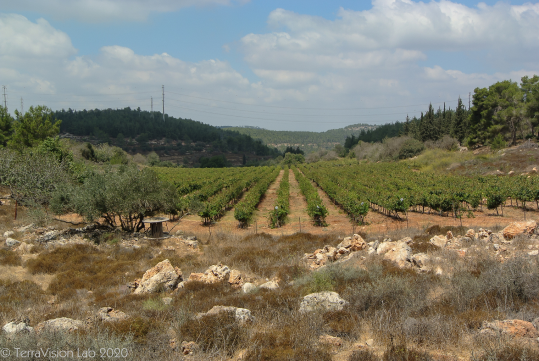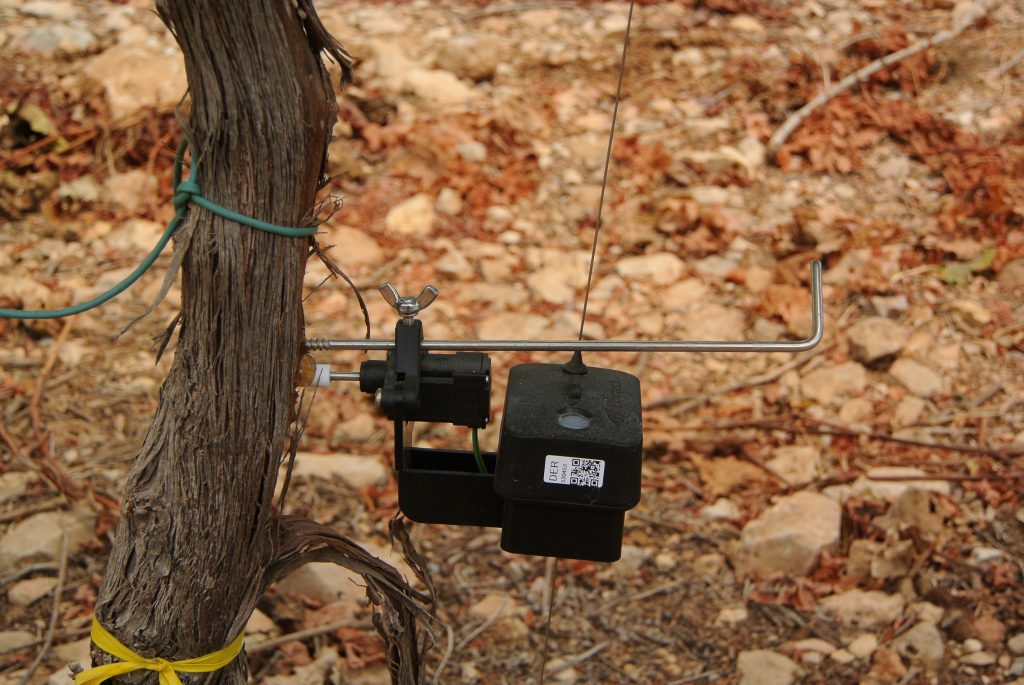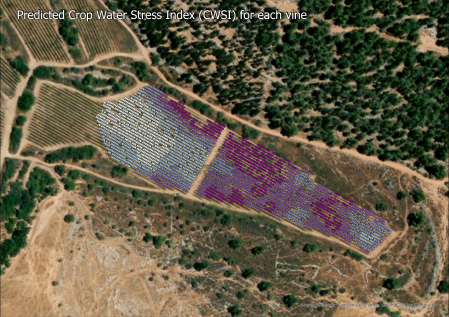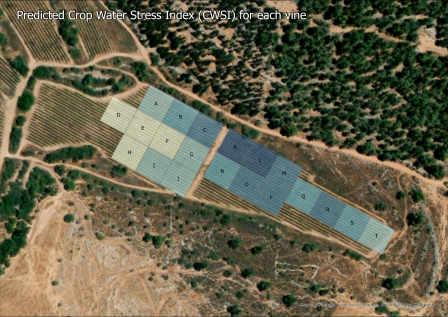Case Study
W4Crop Model
The case study of the Mevo-Beitar vineyard in Israel provides the user with an example of the application process from data input to output, including collected data, data processing, data analysis and outputs. A detailed description of the case study, the methods and algorithms can be found in the following papers: Peeters et al. (2024), “A spatial machine-learning model for predicting crop water stress index for precision irrigation of vineyards”, Bahat et al. (2024), “How do spatial scale and seasonal factors affect thermal-based water status estimation and precision irrigation decisions in vineyards?”, and Bahat et al. (2021), “Remote Sensing, In-season interactions between vine vigor, water status and wine quality in terrain-based management-zones in a ‘Cabernet Sauvignon’ vineyard”.
Overview of case study
The case study is a commercial wine-grape vineyard located 10 km from Jerusalem, next to the settlement of Mevo Beitar (coordinates 31o43’ N; 35o06’ E). The area has a Mediterranean climate (mean maximum summer temperature 29.4ºC and mean minimum winter temperature 6.4ºC) and a mean annual precipitation of 540 mm (between October – May). Topography is highly variable with sloping hills and an elevation of 675-900 m above sea level. A wadi crosses the vineyard from east to west. The vineyard consists of 5522 Vitis vinifera L. ‘Cabernet Sauvignon’ vines on a 2.5 ha area. Spacing in the vineyard is 1.5 m between vines and 3 m between rows.

Collected input data
A variety of plant and environmental data was collected using in-situ measurements, data logging (wired and wireless sensors) and UAV (drones) collected data.
Collected data included:
- Data collected for sample trees such as: stem water potential (SWP), trunk circumference and tree trunk growth, canopy temperatures with infrared thermometer sensors (IRT) and tree canopy RGB imagery.
- Continuous data collected for the entire vineyard such as, thermal and multispectral imaging with drones, soil properties e.g. apparent electrical conductivity (ECa) and soil volumetric water content, meteorological data, topographical data including digital surface and digital elevation models (DSM, DEM) and yield. Crop related indices CWSI and normalized difference vegetation index (NDVI) were derived from the thermal and multispectral images, respectively. The topographic wetness index (TWI) was derived from the DEM.

Only data that was spatially continuous, such as topographical data (slope, aspect, TWI), ECa, NDVI and CWSI, was used to develop/run the model and the tool. All data was organized in a raster format, with each raster representing an attribute (such as slope, NDVI, TWI etc.) and linked to a specific location; i.e. each vine location is assigned the value of its associated raster. For each location the x,y coordinates are derived as well. The final output dataset included a csv file where each column represents a variable. In addition to point (vine) based calculations, mean calculations were derived for each of the 20 equally sized (30 x 30 m) management cells used for application of variable rate irrigation (VRI) and representing management zones.
Analysis
Data was analyzed using machine learning methods and spatial statistical methods in order to recognize spatial patterns and correlations among variables and examine which variables most affect plant water status. Based on the analysis a prediction machine learning based model was developed.
Results and output data
Model outputs included a CWSI prescription map with CWSI predictions per tree point and a prescription map per management cell with CWSI values averaged per cell (or MZ).
Conclusions and recommendations
Water4Crop is a comprehensive model for predicting the spatial variability in crop water stress. It provides users with output prescription maps that can help them understand the spatial distribution of crop water stress on a sub-field level. However, accurate and meaningful outputs largely depend on the accurate representation of the orchard and on sufficient spatial coverage. Users should test the tool’s outputs against real field data before developing water management recommendations.


